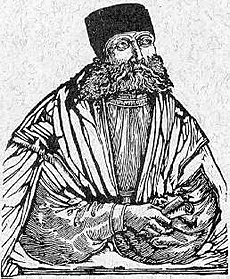8. Rumänien (Siebenbürgen)

Johannes Honterus
(1498-1549)
Up to 1541 Transylvania (or Siebenbürgen) was a part of the Hungarian Kingdom, before it became an autonomous Turkish protectorate up to the end of the 17th Century. The most renowned reformer of Transylvania was John Honterus who introduced the (Lutheran) Reformation in Kronstadt in 1542. By about 1550 the whole Church had become Protestant under the leadership of the clergy, a moderate form of Lutheranism in the tradition of Philipp Melanchthon initially being adopted. From 1550 on, however, the majority of the Transylvanian Church turned to the Reformed Reformation. The pastors Gregor Szegedi and Peter Méliusz Juhasz were important in this respect in the following way. In the argument over the manner of Christ’s presence in the Lord’s Supper they represented an opinion based on the Christ event as a whole: there is no communion with the body of Christ without faith in him. The “body lives from the Spirit.” This position corresponding to the Calvinist doctrine convinced the Transylvanian Church more and more. 1564 is regarded as the first year of the Reformed Church in Transylvania, and by 1567 most pastors had decided for the Reformed Reformation. In 1565 the Heidelberg Catechism was introduced in Klausenburg (today’s Cluj Napoca / Kolosvar). To be sure, the state supported Unitarianism (Anti-Trinitarianism) from 1566 to 1571. Even now there are Unitarian churches in Transylvania. And in 1571 the Catholic Stephan Báthori became prince of Transylvania. He supported the Roman-Catholic Church but also helped the Lutherans. Nevertheless, the principle that each town could choose its own confession continued to be valid. The Transylvanian princes worked together with Habsburg and there was threat of a re-Catholisation. However, the Reformed nobility succeeded to gain the rule in Transylvania in the so-called Long War of 1593-1606. The Turkish supremacy favoured the Reformed Church because they together formed an anti-Habsburg front. This positive situation for the Reformed Church changed in 1692 when it was again suppressed as a result of the Habsburg occupation of Transylvania. Church buildings were confiscated and the use of the Heidelberg Catechism was forbidden. A full re-Catholicisation was prevented by the uprising against Habsburg between 1705-1711. And only the Patent of Toleration of 1781 eventually brought relief. As in other places there occurred a simultaneous emptying of church life. Only in the second half of the 19th Century were there revivals on various different levels. For example, new schools, churches and parsonages were built and the theological faculty in Klausenburg was reorganised. After the First World War Transylvania became a part of Romania. After the Second World War the Reformed Church was founded in the People’s Republic of Romania, which extends beyond Transylvania. Today, living in two districts, there are over 725000 members of the Reformed Church in almost 800 parishes.